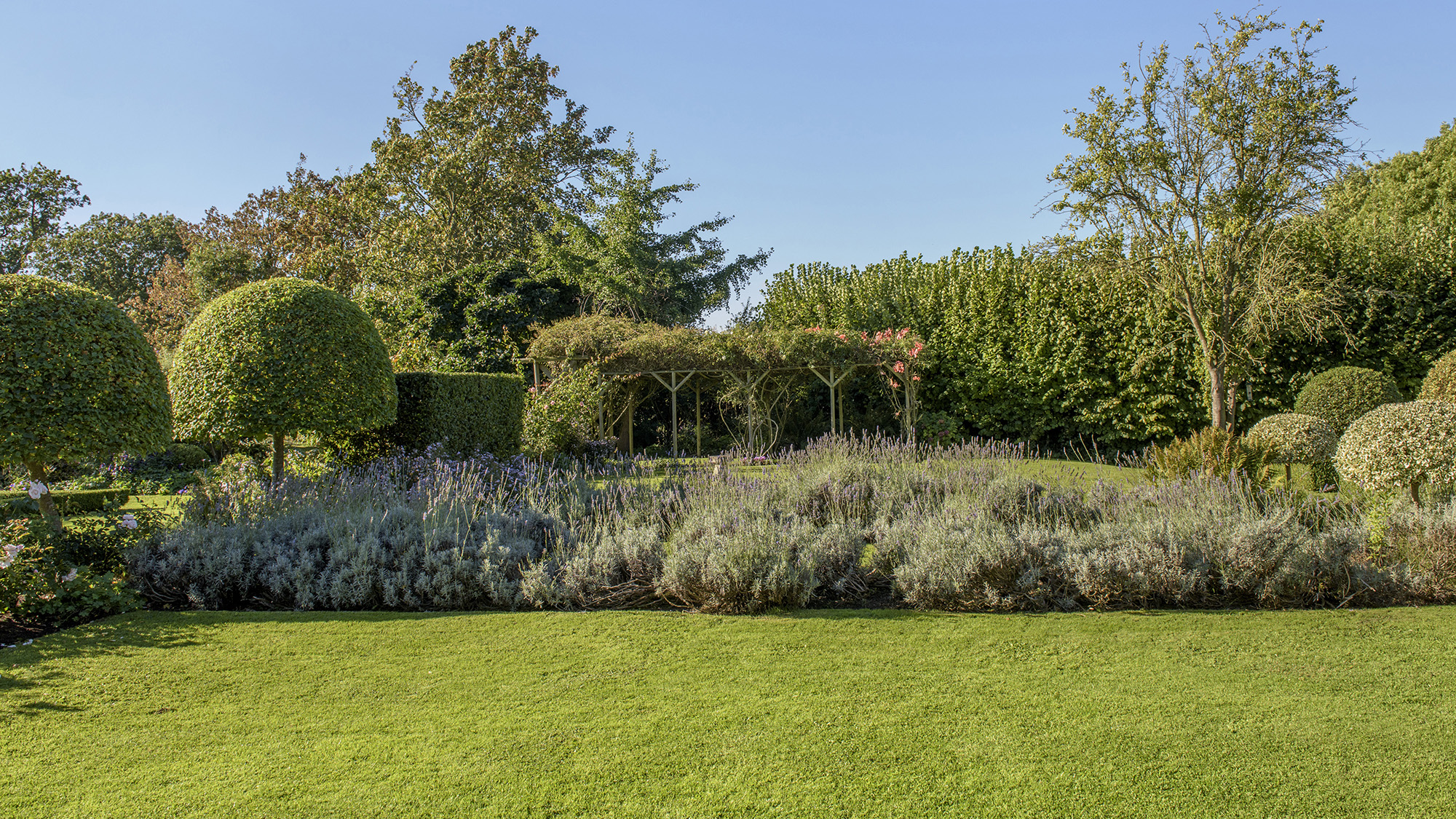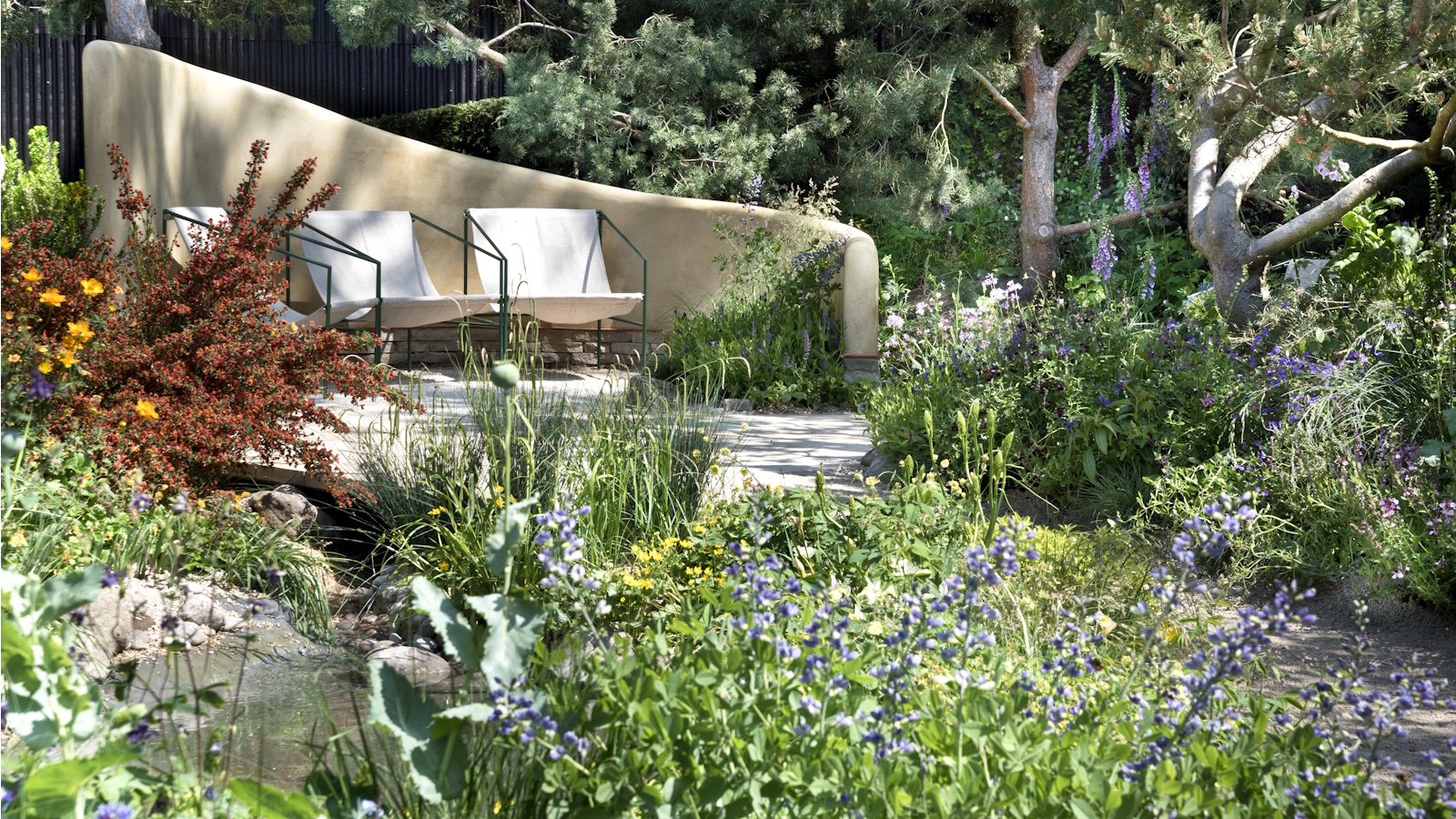When is the best time to dethatch your lawn?
Wondering when is the best time to dethatch a lawn? This is what you need to know


Thick thatch can affect the growth of the grass in your yard, but you might be asking when is the best time to dethatch a lawn to improve its health.
Thatch occurs in every lawn and a thin layer of the dead turf material forms as part of the natural growth process. If it’s less than half an inch (1.27cm) in depth, it’s beneficial to the lawn’s health. But a layer that’s thick isn’t good for the grass and needs attention at the right moment in the gardening calendar.
Here, we look at when you should dethatch a lawn to keep the grass included in your backyard landscaping ideas healthy and verdant.
When is the best time to dethatch a lawn?
The best time to dethatch a lawn is when it’s actively growing. The soil should also be moderately moist. Generally, it’s best to have mowed a couple of times before dethatching.
Cool season grasses need to be dethatched in early spring or early fall. Note, though, that the grass should still be growing if you take the latter option as it needs to re-establish before frost season.
Warm season grasses should be dethatched in late spring through early summer.
Be aware that while these are the timings, it’s not necessarily the case that you will need to dethatch your lawn each year. Ryegrass, for example, may only need to be dethatched at more than annual intervals. Warm season grasses like Zoysia or Bermuda, meanwhile, produce thatch faster and may need dethatching more often.
Never ignore the state of the lawn. ‘If the lawn is dormant or stressed, this is definitely not the right time to dethatch as it can cause permanent damage,’ says Lucy Searle, global editor in chief of Homes & Gardens.
Providing the other conditions are fulfilled and the grass will be actively growing after dethatching, the task should generally be undertaken around the end of March or beginning of April. You could alternatively dethatch towards the end of the growing season – around the end of September.
What to check to dethatch a lawn at the right time
While it’s important to understand the guidelines on when to dethatch grass, you should always check the layer of thatch before going ahead.
‘A thin layer of thatch is part of a healthy lawn, keeping the soil moist and insulating against extreme temperatures,’ says Lucy Searle. ‘It’s only when thatch builds up so that air and moisture can’t reach the soil and the roots of the grass that it becomes a problem.’
To check the depth of the layer of thatch, use a trowel or spade to dig up a small amount of both grass and soil from the lawn.
Thatch layer greater than half an inch (1.27cm) in depth? Then it’s time for dethatching.
Can dethatching hurt your lawn?
Dethatching could hurt your lawn if you don’t get the timing right. Dethatching should always be done when the grass is growing, so never do it when it’s dormant if you want a lawn that grows green and thick. Note also that the depth of the layer of thatch is crucial. If the layer of thatch is thicker than half an inch (1.27cm), and the conditions are also right, dethatching can promote your lawn’s health.
Is it better to dethatch or aerate?
Dethatching and aerating can both help keep a lawn healthy, but they do so in different ways. Dethatching needs to be carried out when the layer of thatch becomes too thick. A lawn that needs dethatching will feel very bouncy, but it’s best to dig down and remove a small section of grass and soil so you can measure the thatch layer before deciding to go ahead.
A lawn needs aerating, on the other hand, when the soil has become compacted. You may find thin or bare patches in the lawn, or the grass may be growing poorly. Gardening expert and writer Monty Don recommends doing so in September. ‘Even if your lawn has come through this summer unscathed, it is always a good idea to aerate it at this time of year,’ he says on his site.
Sign up to the Homes & Gardens newsletter
Design expertise in your inbox – from inspiring decorating ideas and beautiful celebrity homes to practical gardening advice and shopping round-ups.

Sarah is a freelance journalist and editor. Previously executive editor of Ideal Home, she’s specialized in interiors, property and gardens for over 20 years, and covers interior design, house design, gardens, and cleaning and organizing a home for Homes & Gardens. She’s written for websites, including Houzz, Channel 4’s flagship website, 4Homes, and Future’s T3; national newspapers, including The Guardian; and magazines including Future’s Country Homes & Interiors, Homebuilding & Renovating, Period Living, and Style at Home, as well as House Beautiful, Good Homes, Grand Designs, Homes & Antiques, LandLove and The English Home among others. It’s no big surprise that she likes to put what she writes about into practice, and is a serial house renovator.
-
 Victoria Beckham has a unique formula for perfect bedding: 'Very expensive sheets and cheap pillows' – you can follow her example from $15
Victoria Beckham has a unique formula for perfect bedding: 'Very expensive sheets and cheap pillows' – you can follow her example from $15Victoria revealed she goes for crisp, white bed sheets and pillows with neck support from Target – and you can shop similar buys at an ultra-low cost
By Hannah Ziegler Published
-
 I just discovered the best non-toxic product for getting rid of ants in your yard – and you probably already have it in your bathroom cupboard
I just discovered the best non-toxic product for getting rid of ants in your yard – and you probably already have it in your bathroom cupboardThis household item is an effective ant deterrent that doesn't leach harmful chemicals into your soil
By Tenielle Jordison Published